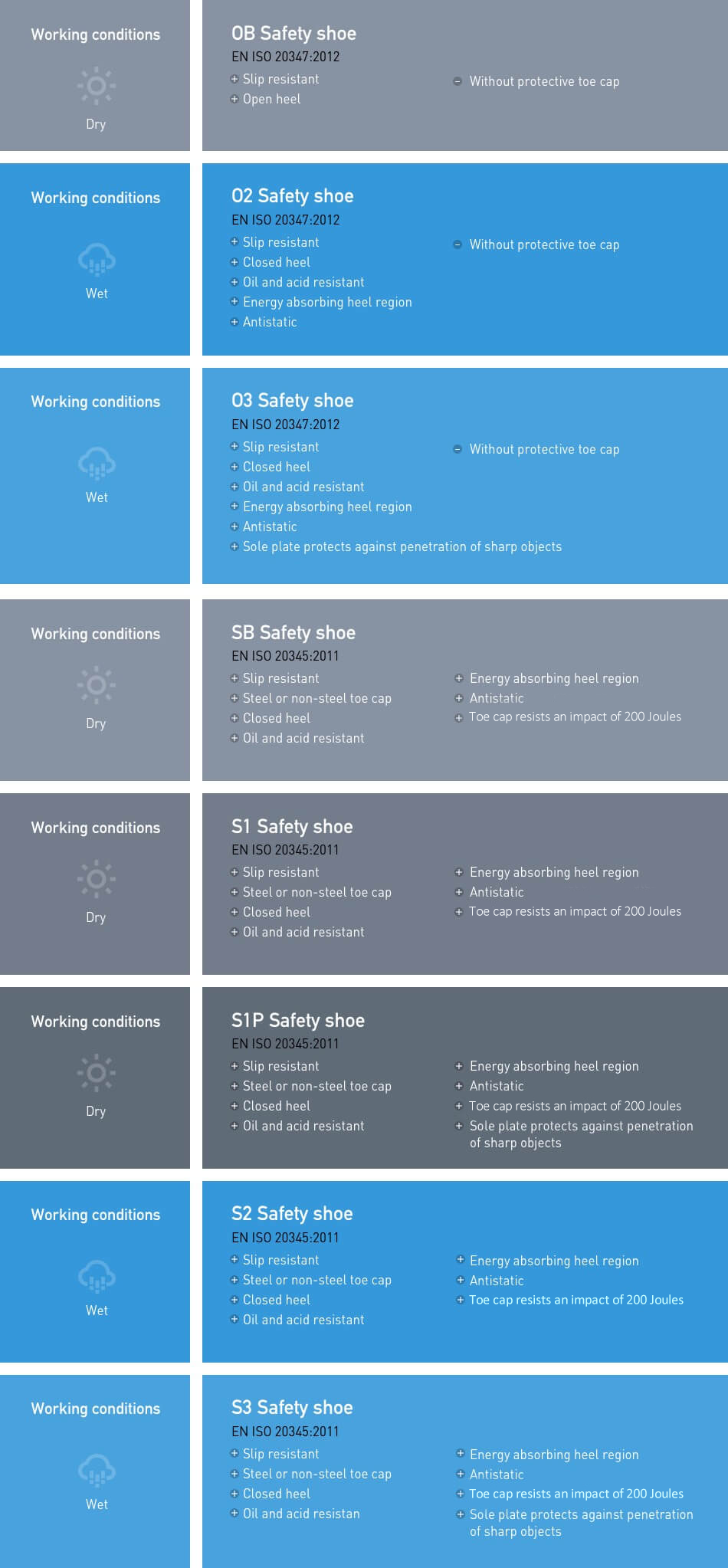What do safety standards say about my work shoes?
If you are working in a specific profession, you need to buy safety shoes that meet certain safety requirements. Often in the context of safety, but also for good support of the employee. The right work shoe can prevent certain accidents at work.
Do you work in the agricultural industry? In that case, safety shoes that meet the highest protection requirements are often necessary. Preference is given to safety shoes with an S3 standard with a steel toe cap and midsole. The steel toe cap has the great advantage that the impact is better absorbed and although there are also lighter alternatives such as composite material, a steel perforated sole continues to offer the best protection in the toughest conditions. Think of protection against heavy tractors, other machines or for example in the livestock sector.
Inlays in safety shoes
The use of inappropriate orthotics may also involve potential risks. The fact is that there is a chance that the antistatic properties of the shoe will be disturbed. This is dangerous for employees who have to deal with (static) electricity. Having too little toe space, because the sole takes up too much space, can also be a disturbing factor. Furthermore, foot orthotics are often not good for wear resistance and for moisture absorption and release. In principle, you can say that the shoe/insole combination needs to be certified. You are therefore not officially allowed to put arch supports from other brands in your safety shoes, otherwise the certification will be invalid.
But what do all these requirements mean?
We have put the most important safety standards in a complete overview.
 Overview of safety standards for work shoes
Overview of safety standards for work shoesAdditional standards
With the additional standards you can tailor your safety shoes perfectly to your working environment.
 Additional standards of work shoes
Additional standards of work shoesExtra tips to make sure your safety shoes are even more comfortable
Buy half a size bigger
If you're not sure which size to have, take half a size bigger than usual. During colder periods, for example, you can wear extra thick socks.
Use insoles
By using insoles, you make sure your work shoe is more comfortable and has the right fit. For example, use a fleece insole for extra warmth on cold days. Important to know; the shoes are certified with the insoles. If a different insole is used, the certificate is not valid anymore.
Take a little more time to choose the right work socks
Often less time is spent on choosing the right work socks, while a pair of high quality work socks can make the difference. For example, you can go for special walking socks that dry quickly and save you a lot of blister pain.
If you still have doubts about the right standards for your work shoes or if you want to know more about safety shoes? Then contact your account manager or check out our safety shoes, boots or clogs in our webshop.

